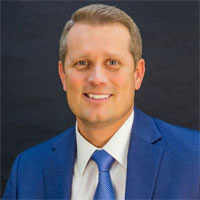
Illinois Eastern Community Colleges (IECC) is a four-college district, one of two multi-college systems in the state. The district services more than 17,000 students, of whom 84 percent do not have a bachelor’s degree or higher. The four IECC institutions offer a wide range of degree and certificate programs that support career and technical education as well as providing a pathway to four-year institutions. IECC has also received national and state recognition for educational excellence, including being named a Top 150 Community College by the ASPEN Institute multiple times.
Like many community colleges in Illinois and around the country, IECC had seen multi-year enrollment declines. The district brought in Dr. Ryan Gower as its new chancellor after he served as president of Lincoln Trail College, one of the IECC campuses. But to add to his challenges, Dr. Gower also started in March 2020 just as the Covid-19 pandemic was underway. Addressing these challenges required a reevaluation of what IECC had been doing with its approach to enrollment management.
Getting a ‘fresh set of eyes’ on strategic planning

“When you see term-over-term decline over a decade, it’s time to take a step back and re-evaluate what you’re doing, to look at the effectiveness of the strategies you’re using with a fresh set of eyes,” said Dr. Gower.
Dr. Gower had interacted with RNL’s enrollment experts at the company’s events over the years, and he thought the firm’s approach would work well for IECC. “RNL are very mission- and data-driven—two things that don’t always go hand in hand,” he said.
IECC initially asked RNL to conduct a Campus Opportunity Analysis to identify potential solutions to its challenges. They then turned to RNL for strategic enrollment planning (SEP), a systematic approach to achieving institutional stability by meeting the educational financial, and material needs of both students and the institution. This systematic process increases interdepartmental collaboration and focuses the entire institution on the areas that will lead to long-term success. “The RNL process was a way for us to get senior leadership in the same room with our front-line employees, so that we could talk about what’s working and see if we could collaborate to find new ways to get the work done.”
Looking at enrollment from the perspective of the whole student lifecycle

“I am a firm believer that if we recruit students, we have a moral obligation to make sure we provide the support services those students need to meet their academic and professional goals.”
As part of the strategic planning process, IECC undertook a gap analysis so they could identify the areas where they needed the greatest change and improvement. That analysis put student success front and center for the district. “In our gap analysis, about 80 percent of what we identified was a need for more robust student services,” said Dr. Gower. The SEP process also had the IECC staff look at the entire student lifecycle, from prospective students to current students to completion and beyond. It gave IECC a more holistic look at its enrollment challenges.
“Sometimes the strategy is not just marketing your way out of a problem,” said Dr. Gower. “It’s taking a real critical look and saying we are providing for students the support and resources they need. I am a firm believer that if we recruit students, we have a moral obligation to make sure we provide the support services those students need to meet their academic and professional goals.”
Creating stronger connections between the enrollment management and student success teams
IECC has a dedicated team of recruiters who build relationships early with high schools, working with students as early as ninth grade. Because the institution serves so many first-generation students, those recruiters have to work as champions for going to college as much as they have to do to choose IECC. “A lot of the work our recruiters are doing is not just getting students to come to Illinois Eastern Community Colleges, but building a college-bound mindset that may be absent in their families,” said Gower.
Enrollment success at IECC also does not end with those students attending college. It’s about making sure those students are “plugged in” and connected to campus resources that can help them. The SEP process has helped build a better handoff between student recruitment and student success. “I think our biggest win in this process so far is making stronger and better connections from our enrollment management team to our student success team,” said Gower.
Enrollment increases, rising retention rates, and optimism for the future
2,412 INCREASE
in headcount over previous fiscal year
55% TO 72% RETENTION RATE
for full-time students
at the four IECC colleges
IECC has already seen three consecutive terms with positive enrollment, and enrollment has grown by more than 2,400 students from the previous fiscal year. IECC also has some of the highest graduation rates for two-year institutions in Illinois. In the previous year, two of the four colleges saw increases in full-time retention rates, with rates ranging from 72 percent to 55 percent. But most importantly to Dr. Gower, the SEP process promoted a student success mindset at the four colleges. “Previously, our team had compartmentalized enrollment and put student success in a different compartment,” said Dr. Gower. “I think one of the things that really helped during this process was that enrollment management is everyone’s responsibility. It belongs with our advisors. It belongs with our faculty. It belongs with the chancellor. To me, that was the mindset change where I could see the light bulb come in for our people.”
Free consultation on Strategic Enrollment Planning
Want to discuss how to put strategic enrollment planning into action? Contact us and we’ll set up a time to talk.